What Is the Cost to Replace a Furnace In 2025?
-
Pete Ortiz
- Last updated:

When it’s freezing outside, and no blanket can keep you warm, the furnace swoops in to save the day. In contrast to boilers that use hot water to heat a house, furnaces circulate hot air. That makes them a lot cheaper and easier to use. On average, well-maintained furnaces serve for around 20 years. They don’t last forever, though, and do break down and lose their efficiency.
When that happens, you need to replace the stock furnace with a new one—the sooner, the better. How much will that cost, exactly? How much do HVAC professionals charge for the labor? Are there any additional expenses involved? And finally, how do you know that the furnace is, indeed, malfunctioning? Read on to find out!
The Importance of a Furnace
In many ways, the furnace is the heart and soul of the heating system. By using natural gas, electricity, oil, or propane, it produces heat and spreads the hot air across the house through ducts. The air ducts, in turn, make sure every single room gets enough heat. Furnaces are known as the most reliable, durable, and reasonably-priced home heating appliances in the US.
And this year, natural gas furnaces will be the most popular pick in American homes. Electric furnaces are also in large demand. As for propane and oil, they’re not nearly as common, mostly because they’re high-maintenance and expensive. Here are the official statistics:
- 48% of households use gas furnaces
- 37% of homes rely on electricity
- 5–12% of American houses use oil
- 8–10% of US homes burn propane instead
We’ll talk about how much each option costs in great detail further down this review.
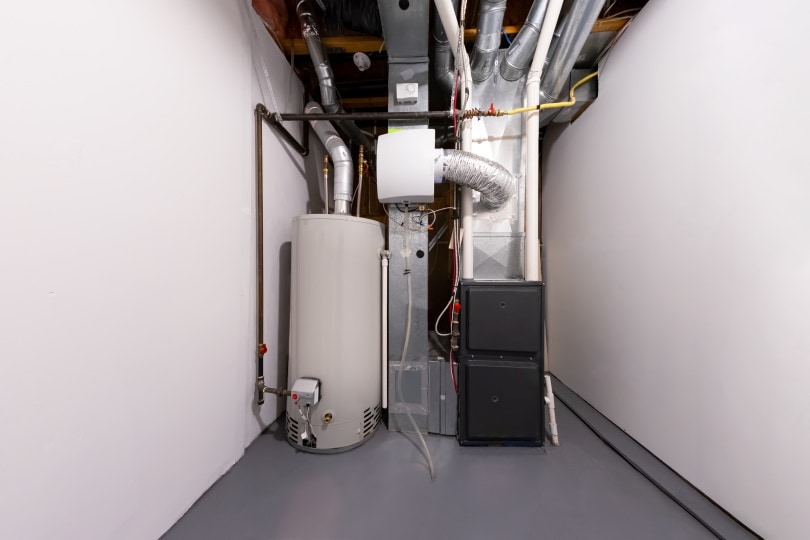
How Much Does a Professional Furnace Replacement Cost?
In the United States, the cost for a furnace replacement can be as low as $2,000 or as high as $11,000. To be more specific, most American households will pay $4,500 this year. For that kind of money, you’ll get a big and strong enough furnace to heat a 2,000 square feet home and some basic modifications. A home warranty plan may even be able to help you with the costs. What about the low-end and high-end costs, though?
On the lowest end of the spectrum, we’ve got 1,000 square foot houses that don’t need any modifications. Depending on the HVAC specialist, the area, and the actual furnace, the replacement can be as cheap as $1,000. Now, to keep a 3,000 square foot house warm, you’ll need a furnace with at least 150,000 BTU (British Thermal Units, a common heat/energy measurement). Together with a new air cleaner, thermostat, and ducts, that will cost $11,000–13,000.
- The average replacement cost in the US: $2,500–$6,000
- The average range: $2,000–$11,000
- The cost of a low-end installation: $1,000
- The cost of a high-end replacement: $13,000
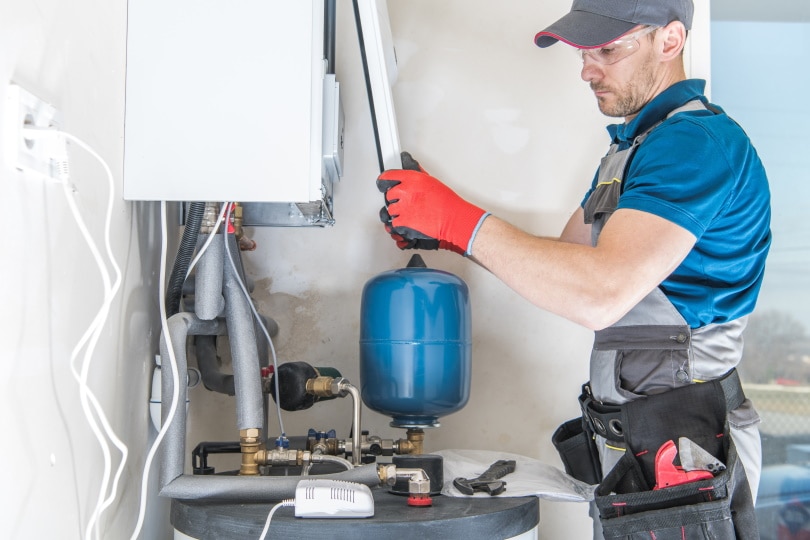
Furnace Replacement Cost by Heating Source
Now let’s see how much you’ll have to pay for a furnace replacement based on the heating source:
| Natural Gas | $4,000–$8,000 |
| Electricity | $900–$2,000 |
| Propane | $3,000–$6,000 |
| Oil | $5,000–$9,000 |
As you can see, oil furnaces are the most expensive ones; natural gas appliances are also quite pricey. Next, propane units are a bit cheaper, while electric furnaces are the most affordable option. Do keep in mind, however, that in the long run, gas furnaces are the most economical units. The reason: gas is much cheaper than electricity, propane, and especially oil.
If you have easy access to a natural gas line, that’s your best bet. While the installation is expensive, the heating bills will be significantly lower.
How Much Do HVAC Specialists Charge?
Again, it depends on the fuel type. This year, HVAC specialists charge $50-100 per hour. The following prices only include the labor cost of replacing a furnace (no modifications/extra work):
| Natural Gas | $450–$3,000 |
| Electricity | $250–$600 |
| Propane | $220–$1,200 |
| Oil | $3,100–$3,500 |
Certain companies remove the old unit for free; others charge $50–$200 for that.
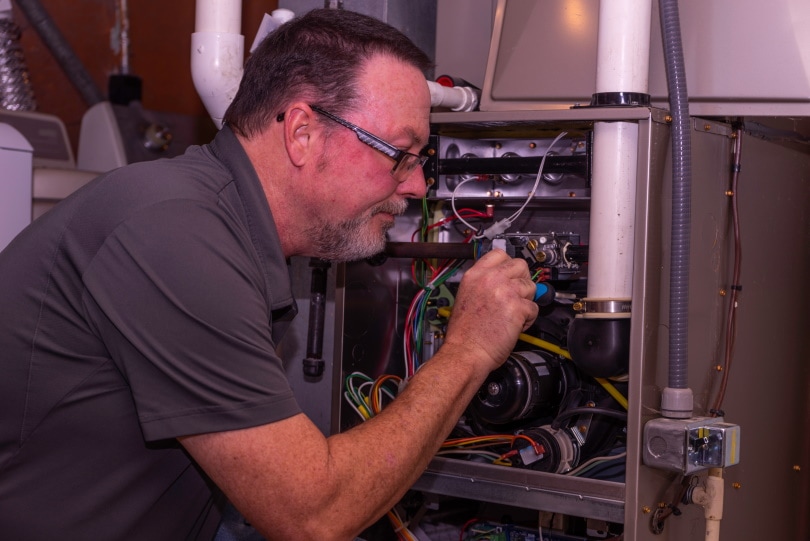
How Big of a Furnace Will You Need? Understanding Climate Zones
Climate zones indicate how hot or cold it is in specific parts of the country. For example, states like Maine, Alaska, and Minnesota belong to climatic Zone 5, while Florida, Hawaii, and Texas are in Zone 1. If you’re having a hard time figuring out which zone your state/city belongs to, use the US Energy Information Administration’s website. There, you’ll find all the necessary info.
Earlier, we mentioned the term BTU. The following list indicates the number of BTUs necessary to heat one square foot in different climate zones:
- Midwest (Zone 1): 30–35 BTU per sq. ft.
- Northeast (Zone 2): 35–40 BTU per sq. ft.
- Southwest (Zone 3): 40–45 BTU per sq. ft.
- West Coast (Zone 4): 45–50 BTU per sq. ft.
- Southeast (Zone 5): 50–60 BTU per sq. ft.
If you know the total square footage of your home, multiply it by the BTUs designated for your climate zone and you’ll figure out the right furnace size. Say, for a 1,000 square foot house, you’ll need up to 50,000 BTUs per hour. But how much is that going to cost you?
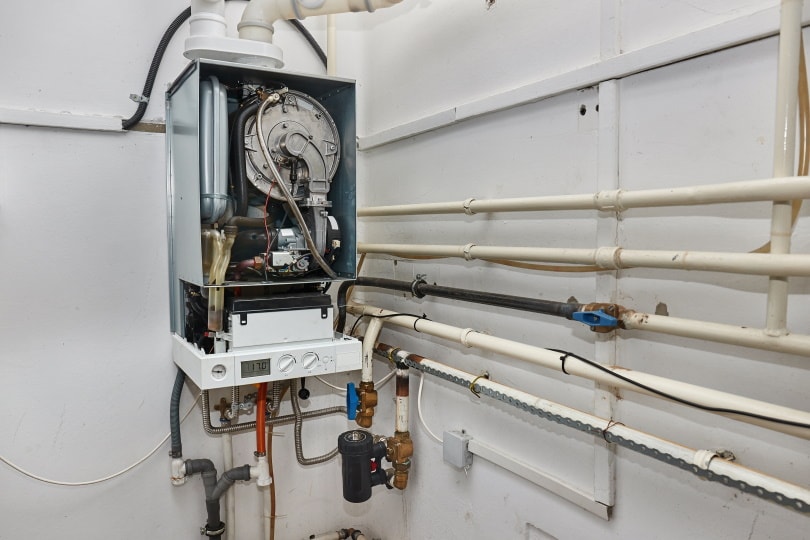
Furnace Replacement Cost by House Size
Remember: the bigger the furnace, the more expensive it’s going to be. So, if you’re the proud owner of a large home, you’ll have to pay extra for the furnace. Here’s a cost breakdown based on the size of the house (the price is only for the furnace, NOT the labor):
- 900 sq. ft.: $550–$2,000
- 1,000 sq. ft.: $650–$2,000
- 1,200 sq. ft.: $700–$2,100
- 2,000 sq. ft.: $850–$2,700
- 3,000 sq. ft.: $1,200–$5,500
A quick note: the cost on the low end is for an electric furnace in Zone 2, while the high-end cost is for natural gas, oil, or propane furnaces in Zones 4–5.
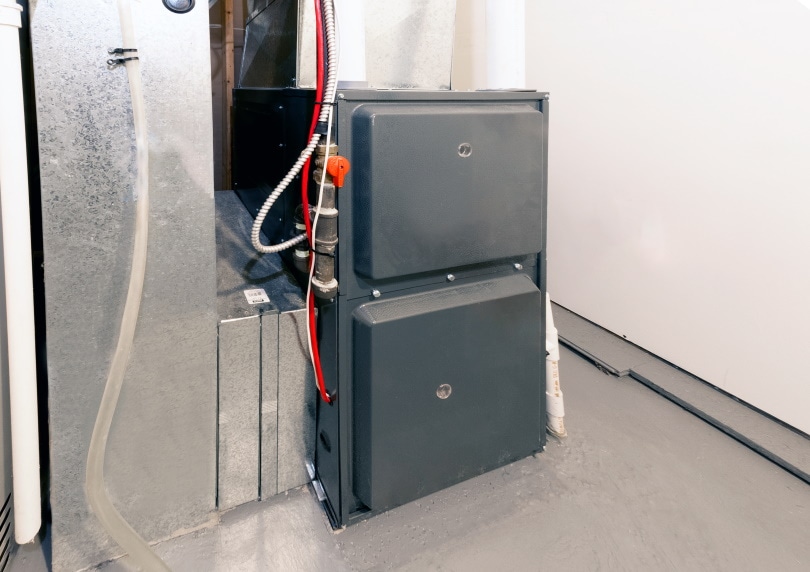
Additional Costs to Anticipate
If this is your first time installing a heating system, there will be some extra expenses involved. We’re talking about ductwork, a brand-new thermostat, etc. The list also covers the cost of switching from a boiler to a furnace and more. Take a look:
| Ductwork | $1,000 for 100 linear feet of new ducts |
| New gas line | $800–$900 for a 25–foot gas line |
| Propane tank | $700–$800 for a 120–gallon tank |
| Humidifier/air cleaner | $550–$1,000 |
| Programmable thermostat | $150–$250 |
| Permit for the installation | $50–$100 |
| Old unit removal | $50–$200 |
| Furnace relocation | $2,000–$3,000 |
| Replacing a boiler with a furnace | $4,000–$17,000 |
| Replacing a heat pump with a furnace | $4,300–$19,000 |
| Replacing an oil furnace with an electric one | $3,500–$5,300 |
How Often Should I Have the Furnace Replaced?
Modern-day furnaces last for 15–25 years (15–20 years if it’s a natural gas furnace and 20–25 if it’s an electric one). And when properly taken care of, they will serve for longer (up to 30–35 years). So, does that mean you’ll never have any issues with the furnace? Well, not quite: even if you’re great at maintenance, the experts recommend replacing it once in 10–15 years. Over time, the stock furnace will lose its effectiveness.
A brand-new system will not only be more efficient but also consume less gas/electricity/oil/propane. In the long run, that will save you money. A quick note: if you think that a bigger replacement furnace is better, think again, because it won’t be at all effective! Instead, you’ll end up paying more, and the large furnace will break down much sooner.

How Do I Know That the Furnace is Faulty?
Temperature drops and loud noises are the most common side-effects of a malfunctioning furnace. So, if you’re hearing any screeching or clicking sounds or if you feel like the furnace can’t keep the house warm enough, that means the unit has to be replaced. To avoid these issues, hire a licensed HVAC specialist once or twice a year. They will inspect the system for $250–$400 and perform maintenance.
On average, they charge $250–$1,500 for the repairs, which is fair. However, if your furnace is over 10 years old and it costs north of $1,000 to repair it, consider replacing it instead. Again, the newer the furnace, the more efficient it will be. In contrast, the older the furnace, the more frequently it will break down.
Conclusion
Installing a new furnace won’t be cheap no matter where you live or how big/small the house is. Plus, HVAC experts charge a lot for the labor. On the bright side, if you’re planning on staying in the same home for at least a decade, a brand-new furnace will be money well spent. As for the fuel/heating source, it all comes down to where you live.
For climatic Zones 1–3, an electric furnace will offer the best bang for the buck. The installation/replacement will be (relatively) cheap, and you won’t have to crank it up to eleven. Oil and propane are quite expensive and messy. So, that leaves natural gas furnaces as the go-to choice for people that live in Zones 3–5.
Featured Image Credit: Globalphotogroup, Shutterstock
Contents


